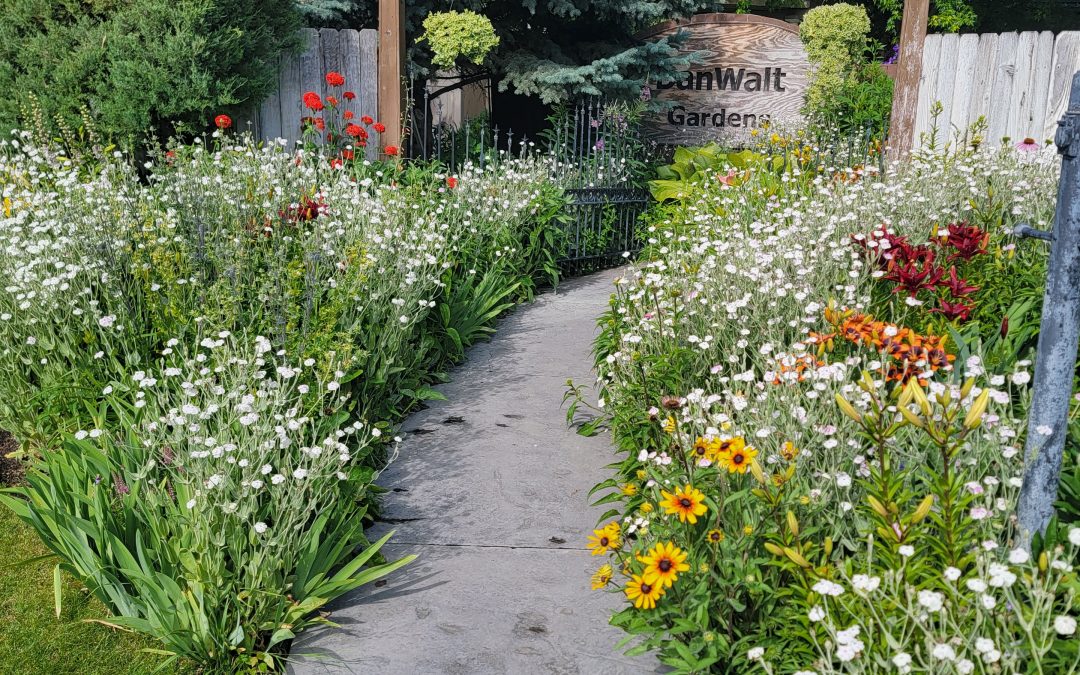
by Joshua Criss | Aug 23, 2025
Identifying the plants present in your gardens and landscapes is a critical skill. These plants are the sculptors of our local environment. As such, it’s important to understand how they affect local ecology, and what services they may provide. Three overarching categories you’ll find as you delve into plant ID are “native”, “introduced”, and “invasive”. The latter of these is the subject of this post. Invasive is often a misunderstood term but hopefully this will clear up some of that misconception.
Definitions
Before any other conversation can even take place, it’s important to define terms. The first, and most important of these is “Invasive”. Believe it or not, there is an official definition laid out by the USDA under Executive Order 13112. It states, “an alien species whose introduction does or is likely to cause economic or environmental harm or harm to human health.” Alien in this instance being any propagation material of a species not native to a particular ecosystem.
Invasive contrasts with “Native” or “Introduced” species which either naturally occur in an ecosystem or were brought to said system through human activity. Keep in mind that many introduced species have served gardeners very well providing food, beauty, and pollinator support without the risks associated with invasive plants. You can find all these terms defined on the USDA’s website.
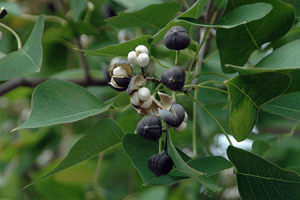
Chinese Tallow “Popcorn Tree” Photo: J. LaForest UGA
What’s the Damage
So why is it important to know these species, and more importantly what can gardeners do about them? The primary issue with these plants is how they impact our natural areas. They compete for real estate crowding out more desirable species. They also deprive these species of resources such as sunlight or nutrients often denying nectar to our pollinators.
Not worried about the impact on natural areas? On an economic front, it costs Florida’s taxpayers roughly $179 million per year to manage invasive species, the majority of which is applied to plant species. This number may seem high, but considering a single invasive insect has cost the citrus industry billions in lost production it seems appropriate.
Economics not persuasive? Some invasive plants such as castor bean (Ricinus communis) are very dangerous for humans. Ingestion of this plant carries a high potential of illness and often results in fatality.
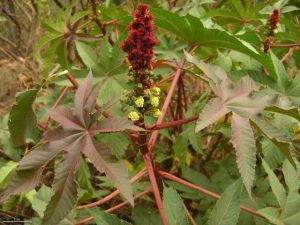
Castor Bean Plant
Photo: J. Hollinger
Summing it all up
The bottom line is that invasive plants are not innocuous. The plants we grow in our landscape can and do have detrimental effects on the surrounding environment, the economy, and are potentially deadly to humans. It’s incumbent upon all gardeners to know how to identify these plants. Once you have identified them, it’s important to learn how to eliminate them so they don’t return.
There are many resources out there to help with identification. UF/IFAS has an assessment tool here. This tool allows you to search for individual plants and provides their known status. Another great way to discover the invasive status of your plants, is through the Florida Invasive Species Council or FISC. They are the convergence point between scientists, land managers, and local governments which inform a list of plants with invasive tendencies. That list may be found here.
For more information on controlling invasive species or any other gardening topic, please contact you local UF/IFAS Extension office.
by Donna Arnold | Aug 15, 2025
Kalanchoe Species in Florida: Invasive Threats and Management
Several species of Kalanchoe, widely distributed through horticulture as popular containers and landscape plants, have escaped cultivation and become invasive in Florida. Of the approximately seven species reported outside of cultivation, two have been documented as particularly problematic: Kalanchoe pinnata (commonly known as Cathedral Bells) and Kalanchoe × houghtonii (known as Mother of Millions). Both are listed as Category II invasive plants by the Florida Invasive Species Council (FISC), indicating they have the potential to disrupt native ecosystems. “In Central and South Florida, the plant is listed as invasive; hhowever, there is a cautionary note for North Florida.”
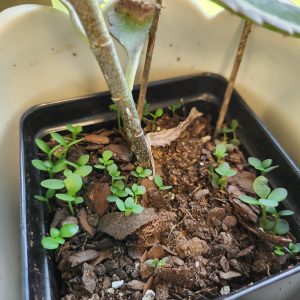
Photo Credit: Donna Arnold, FAMU Extension
Kalanchoe × houghtonii is a hybrid of K. delagoensis and K. daigremontiana, which has led to some confusion in reporting and distribution records. These species belong to the Crassulaceae family and are characterized as succulent herbs with hollow, fleshy stems. K. pinnata features rounded, scalloped leaves, while K. × houghtonii has slender, pointed, fleshy leaves. Their bell-shaped, pendulous flowers range in color from green to red. In Florida, these plants are primarily found in South Florida and along the East Coast, extending as far north as Nassau County.
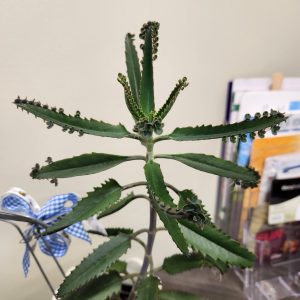
Photo Credit: Donna Arnold, FAMU Extension
The ecological impacts of Kalanchoe species are significant. Reproduction occurs both sexually and vegetatively, with plantlets forming along leaf margins and even on inflorescences. This species high reproductive rate and ability to thrive in dry, arid environments allow them to invade coastal dune habitats, where they form dense carpets that crowd out native species. Shallow root systems contribute to destabilization of sandy areas by displacing native plants such as sea oats, which are essential for anchoring sand and preserving dune integrity.
Effective management begins with prevention. Homeowners are advised not to plant Kalanchoe species and to avoid dumping landscape material in natural or disturbed areas. Physical control methods include hand-pulling and secure disposal of plant material to prevent regrowth. Chemical control can be achieved using a 5% glyphosate foliar spray, which is effective in killing individual leaves that might otherwise produce new plantlets. Follow-up removal of detached leaves is essential to prevent further spread. Currently, there are no known biological control methods for these species.
For more information and personalized management recommendations, homeowners should consult their local UF/IFAS Extension office. Additional resources are available through the UF/IFAS Center for Aquatic and Invasive Plants, and the Florida Invasive Species Council Plant List.
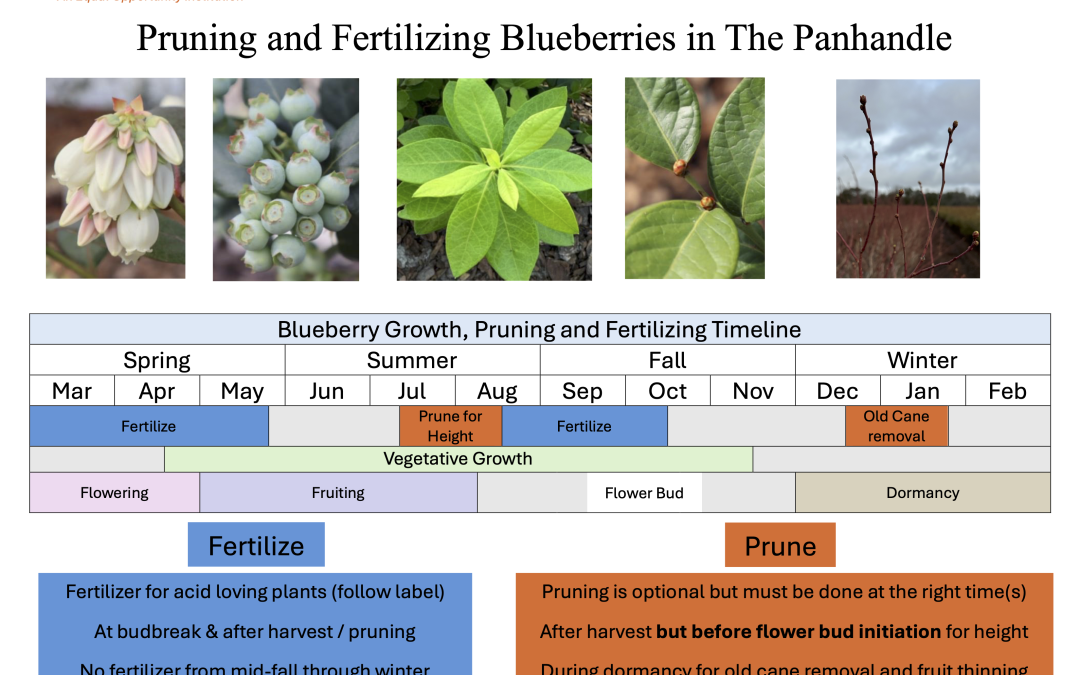
by Lauren Goldsby | Jul 31, 2025
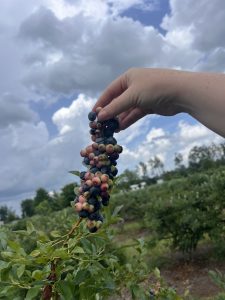
Blueberry flower buds are formed at the cane ends.
When, how, and if you prune your blueberries depends on your goals and how you want to manage your plants. Pruning is usually done to control plant height, open up the canopy, and remove older canes that are less productive. Blueberry canes form flower buds starting from the upper ends of the stems. As plants grow taller, the best berries develop higher and higher. Lower, shorter canes will still produce fruit, but the upper canopy can shade them, leading to fewer berries within easy picking height. Rabbiteye varieties common in the Panhandle can reach 20 feet (7 m) if left unpruned. Some gardeners like leaving the upper berries for birds while harvesting the lower fruit for themselves, while others prefer to prune plants shorter to keep berries within easy reach.
Blueberry plants can be pruned at two main times of year:
After harvest (summer): This is the time to reduce plant height, but it must be done soon after the last berries are picked and before fall, when flower buds form inside the stems. If you wait too long, you risk cutting off next season’s flowers and losing fruit. After summer pruning, it’s a good time to apply an acid-loving plant fertilizer to encourage new growth.
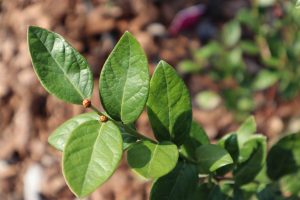
Once buds are visible, it’s too late to prune for height without losing berries.
During dormancy (winter): In winter, you can remove dead, damaged, or old unproductive canes to open up the canopy and allow for new growth. Avoid removing more than 30% of the total canes in a single year. Winter is also when fruit thinning can be done. If there are too many buds on the plant, the berries may stay small. By selectively removing canes, the plant can produce fewer but larger berries.
Pruning can be an important management tool, but it isn’t mandatory. If you choose to prune, make sure to do it at the right time for your goal- whether it’s controlling height, encouraging bigger berries, or simply refreshing older plants. See the chart below for a seasonal guide to pruning and fertilizing blueberries in the Panhandle. Pruning and Fertilizing Handout Download
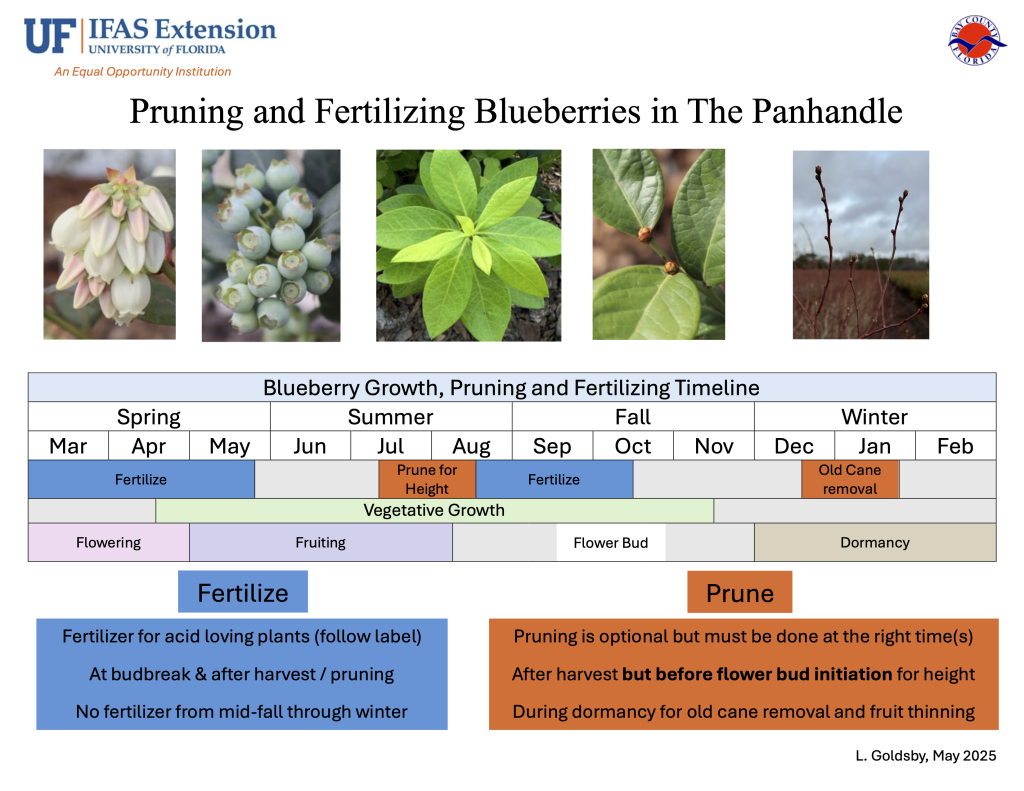
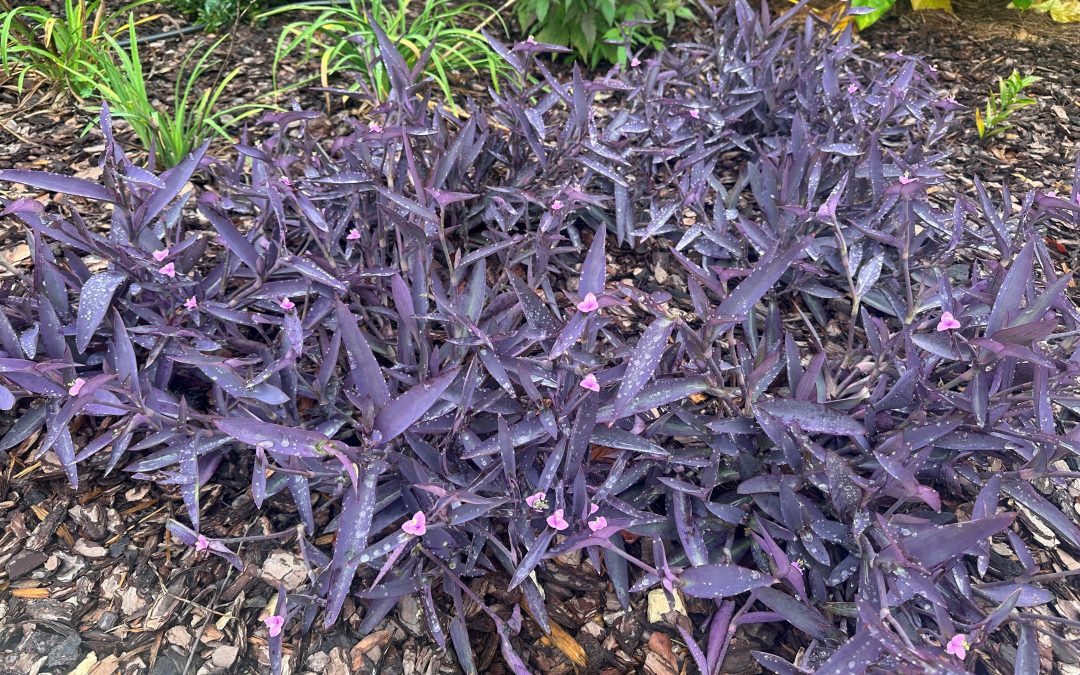
by Daniel J. Leonard | Jul 31, 2025
All gardeners dream of the perfect plant that requires no maintenance, comes back every year, and remains strikingly beautiful nearly year-round. There is one such plant in my landscape that I never have to fuss over and always looks the part. One plant stands unflinching through summer heat or winter cold. One plant is never fazed by excessive rainfall or parching drought. One plant remains unbothered by pesky insects or disease. That plant is Purple Heart (Tradescantia pallida ‘Purpurea’) and it will always have a place in my garden.
Purple Heart is a tender perennial groundcover native to tropical Mexico and, as its name might imply, purple is the primary hue the species adds to landscapes. A true all-round performer, Purple Heart offers stunning purple foliage and small purplish-pink, pollinator-attracting flowers from spring green up to the first killing frost. In some mild winters, Purple Heart even behaves as an evergreen in the Panhandle!
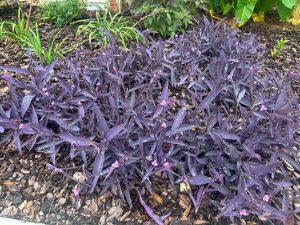
Purple Heart planting in July. Photo courtesy of Daniel Leonard.
Since attractive foliage is the primary draw with Purple Heart, siting it to maximize leaf color is important. For the deepest, most vivid shades of purple, plant in full sun; 6 or more hours of direct sunlight is ideal. Also, like many tropical plants, Purple Heart will look its best with ample moisture but, once established, is among the most drought tolerant options for Panhandle landscapes. I’ve found my Purple Heart stands look their best with occasional watering during extremely hot, dry periods, but other than that, they thrive on rainfall alone.
If there is a drawback to the species, it might be a little too vigorous and easy to grow. Because plantings can rapidly grow and expand, rooting along stems as it goes, Purple Heart can sometimes become weedy in landscapes. In my experience, Purple Heart plays nicely in the landscape with other perennials and isn’t aggressive to the point of choking out its neighbors. However, if you desire an extremely neat and orderly landscape, Purple Heart’s freewheeling nature might best be used as a spiller plant in large containers or planted in an area confined by hardscape features.
If you decide to color your landscape purple with Purple Heart, plants can be found for sale at nearly any garden center or nursery and are extremely easily propagated, making it a popular passalong plant – chances are you might know someone who would willingly share a cutting (or three) with you. For more information on this popular purple perennial or any other horticultural topic, contact your local UF/IFAS Extension county office. Happy gardening!
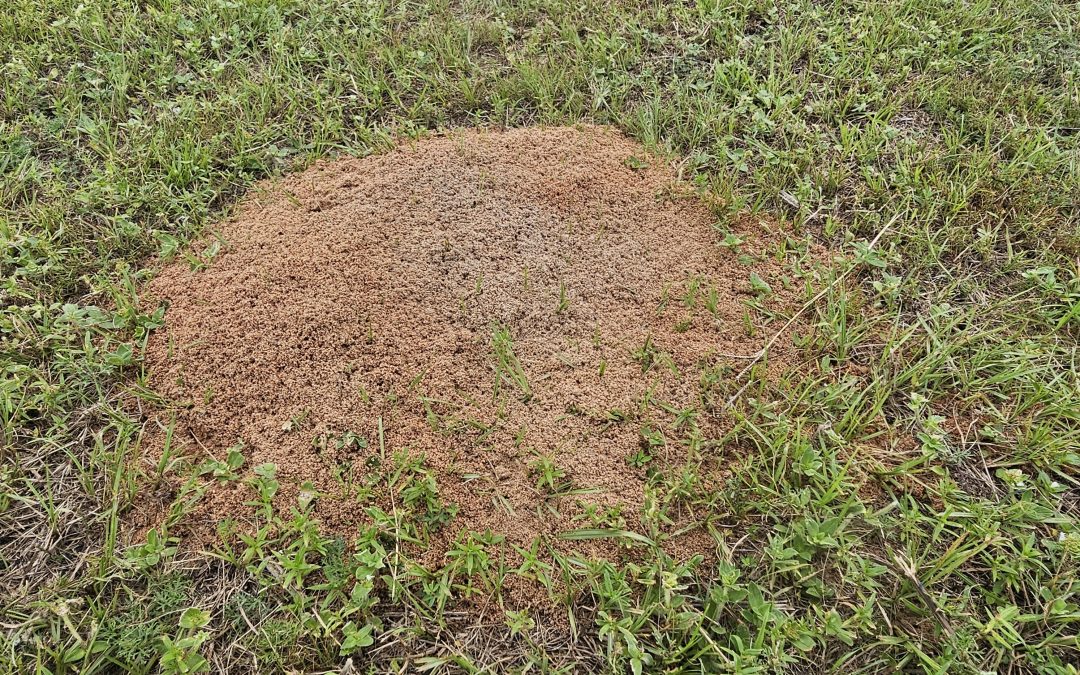
by Evan Anderson | Jul 27, 2025
The warm Florida climate makes it a biologically diverse place, with plants and animals from all over the world finding a foothold here. Some are benign, while others can become pests that harm the environment or get in the way of human activities. One such pest is the red imported fire ant, a visitor from South America. Introduced to North America somewhere in the 1930s or 1940s, these ants are native to a region of savannas and wetlands, where the rainy season brings flooding part of the year. Finding a similar climate along the Gulf coast after hitching a ride on ships, what these ants did NOT find were predators that could keep their populations in check. They have since spread throughout the southeast, and are predicted to make their way up the east coast as far as Maryland, west into Texas before it becomes too dry for them to live comfortably, and even along the Pacific coast of the United States.
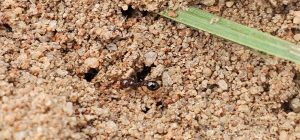
A red imported fire ant.
Though they are called ‘red’, their coloration is often reddish-brown with a darker abdomen. Populations in different areas may vary in their particular shade of color. They range in size from 1/8 to ¼ inch in length. A characteristic identifier for this species of ant is their mounds. These are not just regular anthills, where workers digging tunnels belowground dump grains of soil in a pile. Fire ant mounds help the colony regulate temperatures and moisture levels. They are often constructed in open, sunny locations. Disturbing a mound will cause the ants within it to swarm, with hundreds of ants suddenly ready to sting anything around. Their sting usually leaves a white pustule on the skin, coupled with an intense burning or itching sensation. Being attacked by fire ants is one of the least fun things you can do in a garden or landscape.

A fire ant mound.
How do we get rid of fire ants? It is important to understand that fire ants don’t live alone. They are dependent on their colony, where workers forage for food, soldiers protect the nest, and the queen (or queens – fire ant nests have been known to have multiple queens) lays eggs. The queen remains sheltered inside the nest, and until she is gone, the nest can replace its workers. Therefore, any treatment must effectively remove the queen.
Home remedies are often ineffective. Pouring boiling water over ant mounds can damage the colony, but may not reach deep enough into the mound to kill the queen. Applying dry grits to a mound will not harm the ants. Other remedies, such as club soda, simply do not work, and while gasoline and other harsh chemicals might kill some ants, they are not guaranteed to kill the queen. They are likely to cause contamination of the groundwater, however.
What are effective are insecticides, formulated as baits or mound drenches or treatments. Baits are taken by the workers back into the nest, where they are fed to the queen. Mound treatments, when properly applied, soak into the mound and are able to penetrate deeply enough to eliminate the colony. Read the label of any product you choose carefully and follow the instructions.
For more information, see our EDIS fact sheet here:
ENY226/LH059: Managing Imported Fire Ants in Urban Areas
Evan Anderson
Walton County Horticulture Agent














